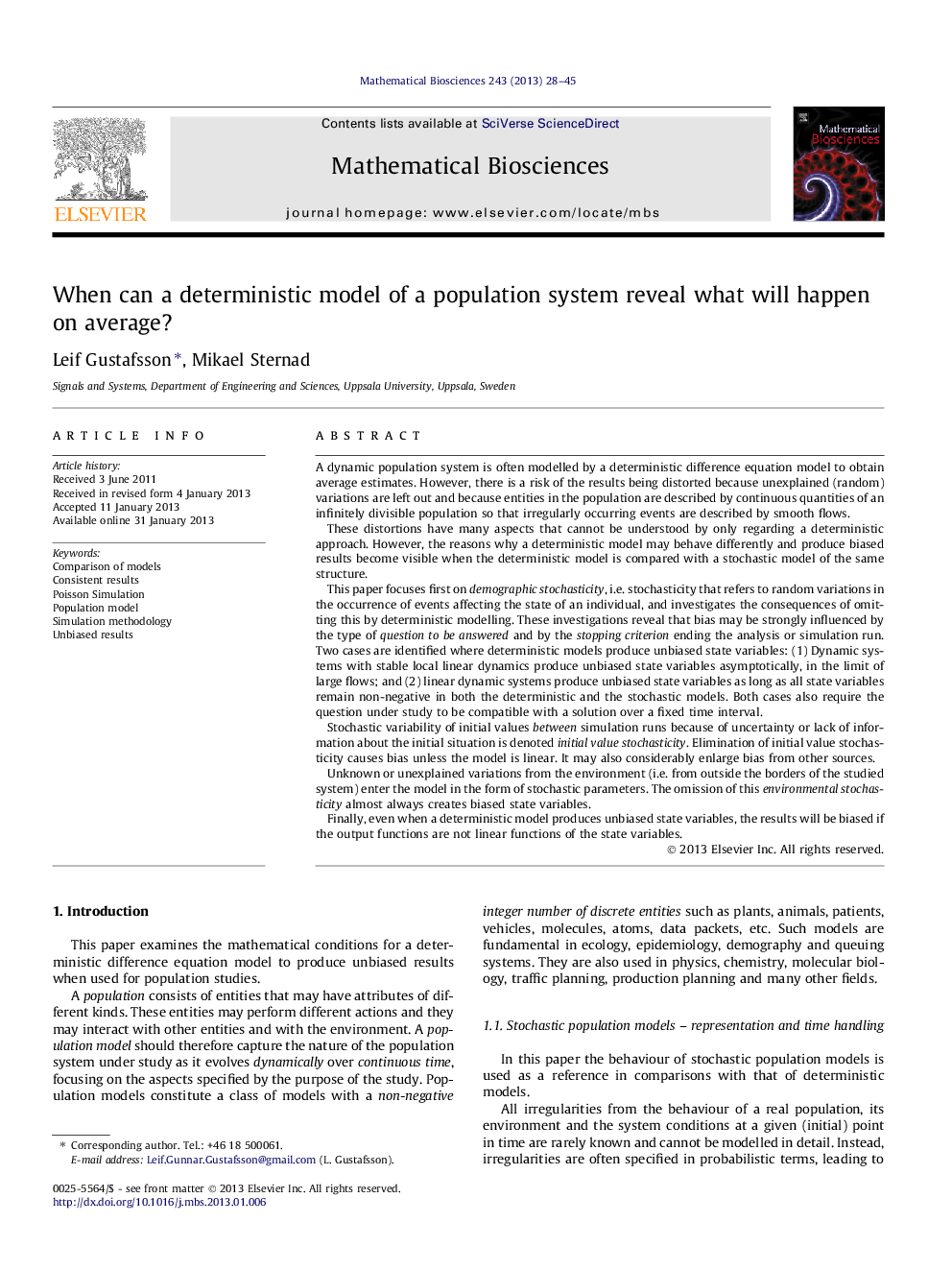| کد مقاله | کد نشریه | سال انتشار | مقاله انگلیسی | نسخه تمام متن |
|---|---|---|---|---|
| 4500170 | 1319966 | 2013 | 18 صفحه PDF | دانلود رایگان |

A dynamic population system is often modelled by a deterministic difference equation model to obtain average estimates. However, there is a risk of the results being distorted because unexplained (random) variations are left out and because entities in the population are described by continuous quantities of an infinitely divisible population so that irregularly occurring events are described by smooth flows.These distortions have many aspects that cannot be understood by only regarding a deterministic approach. However, the reasons why a deterministic model may behave differently and produce biased results become visible when the deterministic model is compared with a stochastic model of the same structure.This paper focuses first on demographic stochasticity, i.e. stochasticity that refers to random variations in the occurrence of events affecting the state of an individual, and investigates the consequences of omitting this by deterministic modelling. These investigations reveal that bias may be strongly influenced by the type of question to be answered and by the stopping criterion ending the analysis or simulation run. Two cases are identified where deterministic models produce unbiased state variables: (1) Dynamic systems with stable local linear dynamics produce unbiased state variables asymptotically, in the limit of large flows; and (2) linear dynamic systems produce unbiased state variables as long as all state variables remain non-negative in both the deterministic and the stochastic models. Both cases also require the question under study to be compatible with a solution over a fixed time interval.Stochastic variability of initial values between simulation runs because of uncertainty or lack of information about the initial situation is denoted initial value stochasticity. Elimination of initial value stochasticity causes bias unless the model is linear. It may also considerably enlarge bias from other sources.Unknown or unexplained variations from the environment (i.e. from outside the borders of the studied system) enter the model in the form of stochastic parameters. The omission of this environmental stochasticity almost always creates biased state variables.Finally, even when a deterministic model produces unbiased state variables, the results will be biased if the output functions are not linear functions of the state variables.
► Deterministic modelling of population systems is hazardous.
► Elimination of stochasticity usually creates biased results.
► Comparing stoch. and determ. models of the same structure is a powerful method.
► Two cases where deterministic models will produce unbiased results were proved.
► Omitted stochastic factors that can make a deterministic model biased are identified.
Journal: Mathematical Biosciences - Volume 243, Issue 1, May 2013, Pages 28–45